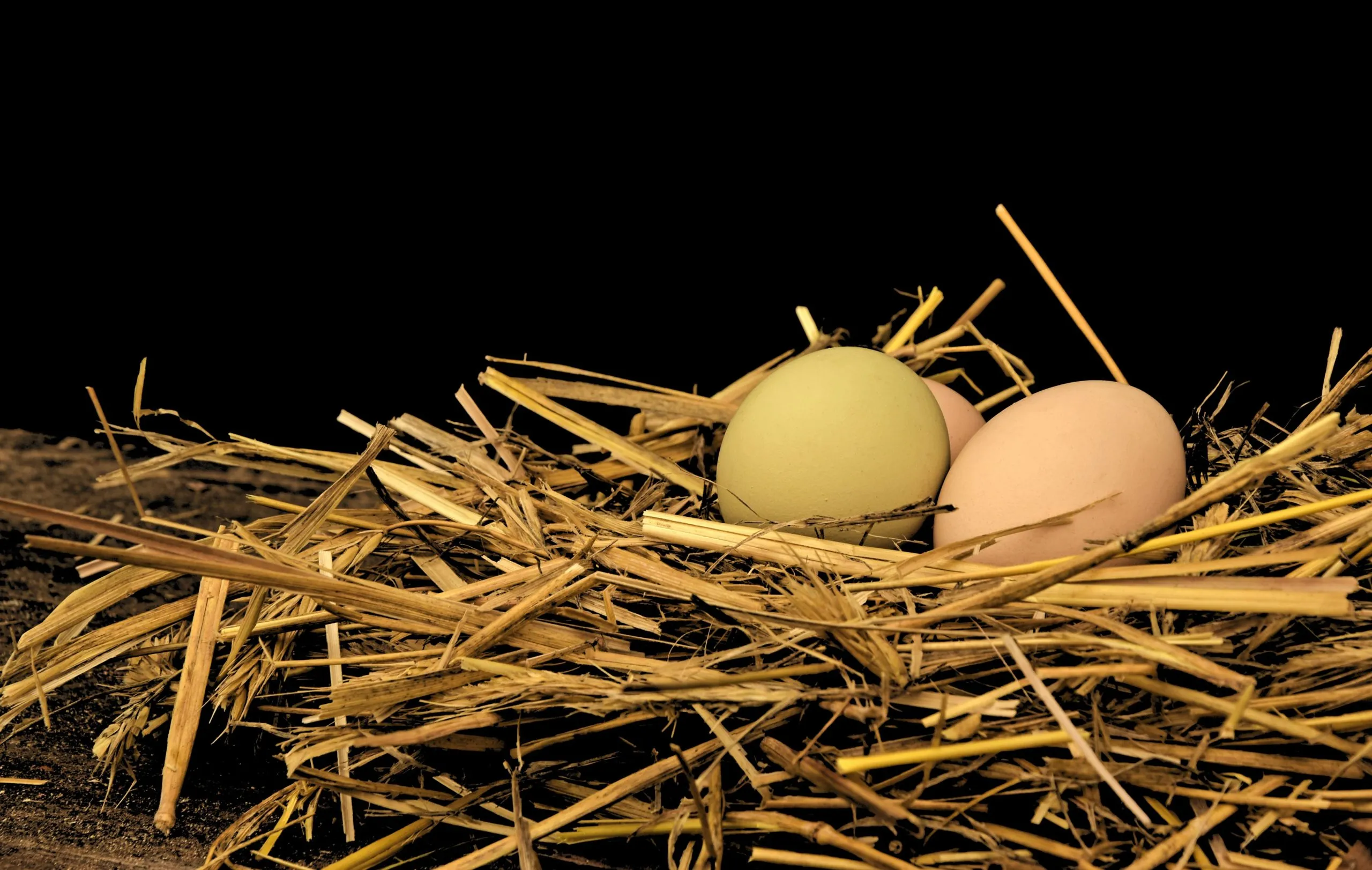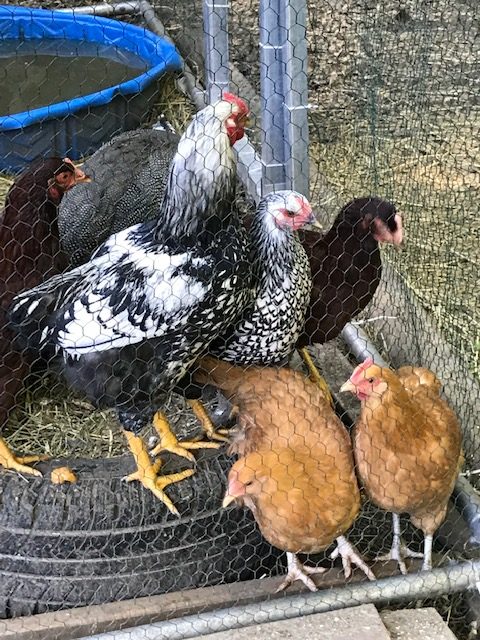Game-changing tips for raising chickens—What you must know to raise chickens
(This post may contain affiliate links. See the full affiliate disclosure here for more info.)
Does the price of store-bought eggs have you thinking about raising chickens? Looking for tips on how to own chickens and have your own supply of chicken eggs? Want to raise your own flock of chickens?
Let me share some tips—some I learned the hard way, and others I got from other homesteaders who raise chickens.
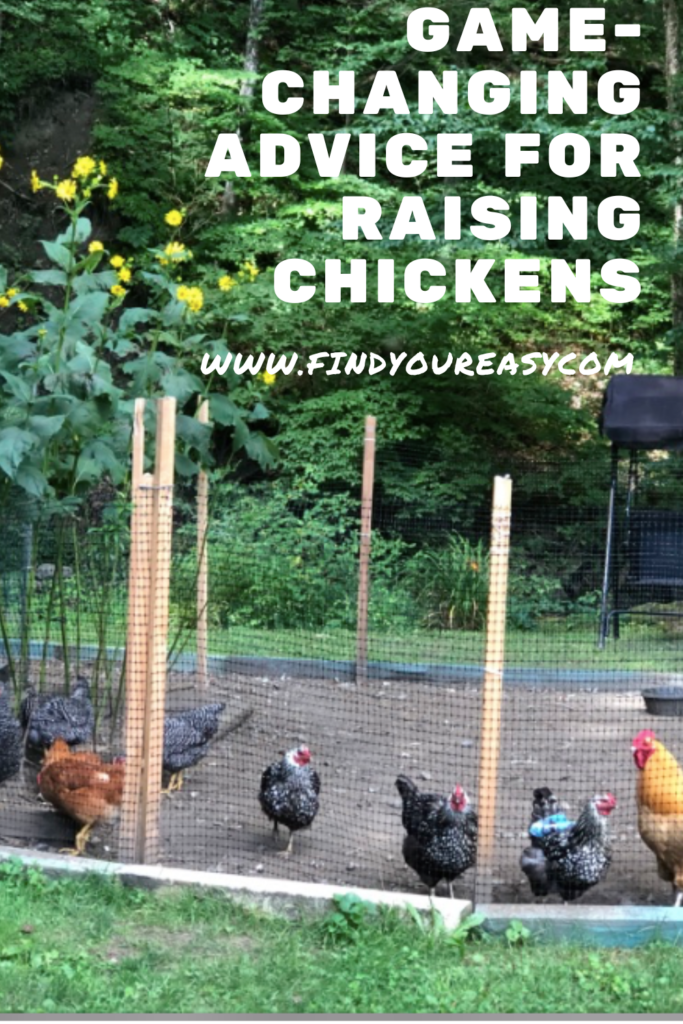
These are tips for old and new chicken owners alike. The best way to raise chickens successfully is to learn how to raise chickens from those who have already made mistakes and learn from them.
I can’t tell you which one or more of these are the most important tips, but they were game-changers for me.
What do you need to raise chickens?
Knowing what you need for raising chickens and preparing ahead of time will save you time, money, and frustration.
It will also help to provide a safe environment for your chickens that can help to protect them from the environment and predators.
All of these are important when raising chickens.
What do chickens need?
Whether you are raising egg-laying hens, meat chickens, or dual-purpose chickens, they need protection from predators and the elements, food, and water.
You can set up elaborate systems, or you can make it easy and learn the best ways to raise chickens from others’—and my—mistakes.
A tight budget and not really knowing how vested I would be in raising chickens drove most of our decisions, and we modified them along the way. I strongly recommend starting small and easy and taking all the advice you can get!
Chickens will reward you with eggs and sweet company—trust me, raising chickens can become more of a lifestyle choice and so much fun, and the girls will become your little flock of cluckers.
What does a chicken coop need?
What should you consider when building or buying a chicken coop?
First, let me tell you what our coop setup is like. We live in Vermont, and it was important to shelter our chickens from the snow and cold weather. Cold temperatures are certain in the winter.
You might live in a very hot climate. So, protecting against the elements and temperature extremes is something we have in common.
Our first chicken coop
We built a chicken tractor of sorts on a utility trailer base. It’s not a work of carpentry art, but it’s functional. We used plywood for the walls and corrugated metal roofing.
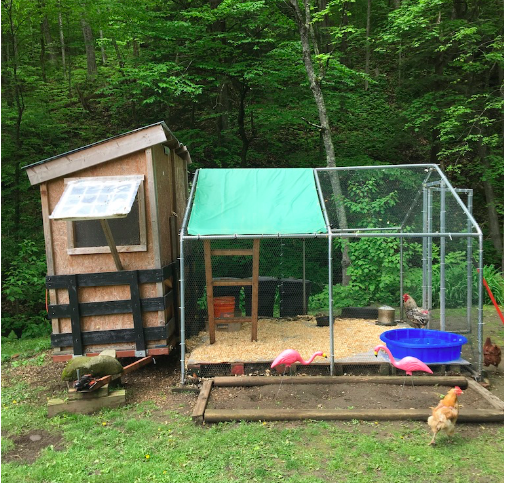
The roof is slanted, so snow can fall off easily, and is supported by 2 X 4’s. We left the roof vents formed by the 2 X 4’s open for ventilation. BIG MISTAKE. It took a while, but eventually, the predators found the openings. More on that is below.
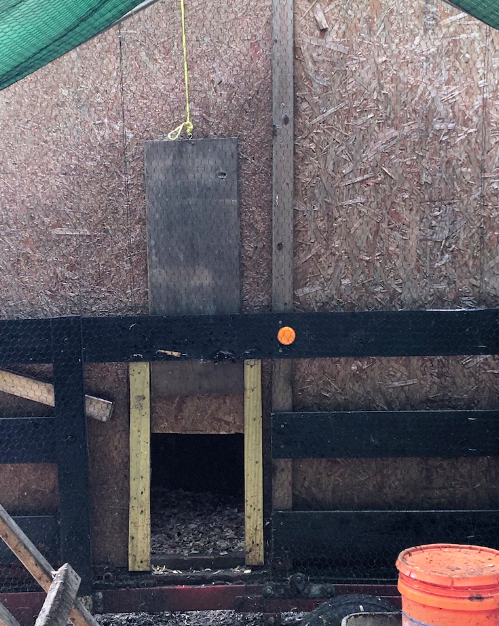
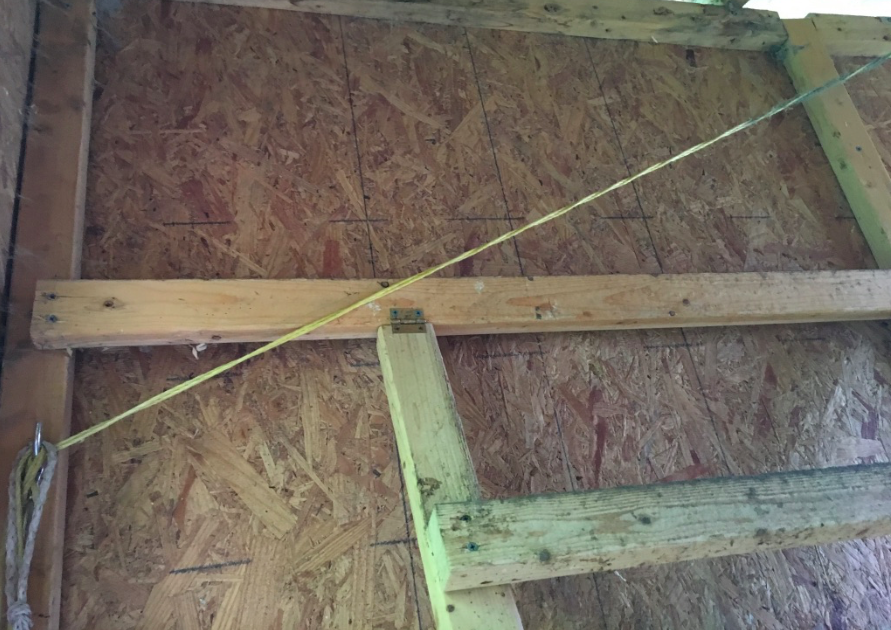
Originally, we built a crude, wide ladder for roosting. We connected the top of the ladder to the side of the coop with hinges. Those made it easy to lift the ladder to clean below it, but now, I wouldn’t do that because it’s not necessary, and the ladder cannot be removed for a more thorough cleaning—it has to be lifted (by someone).
A lift-up coop door on hinges was added to the side of the coop. It led to a small chicken ramp to the yard. We also put a window on the end of the coop. We used a salvaged window, hung it on a hinge so we could prop it open easily, and covered the opening under the window with screening.
We let the chickens free range and collected them at dusk. However, chickens do come home to roost, literally, so it usually wasn’t too hard to get them corralled again and back into the coop.
The birds laid their eggs on the floor that was covered with straw. It worked. Some of the birds traveled across the road, and we found eggs in odd places, like under cool shrubbery or on the running board of the lawn tractor.
We’ve since improved our chicken-raising operation.
Our current chicken coop
How much space do you need for chickens? How much area is needed per chicken? How big should a coop be? Will a small coop do? How much room is enough for chicken rearing? What’s the ideal number of chickens per square foot of coop?
Most online estimates are 2 to 5 square feet per bird. We don’t have a large flock. We have 11 hens, one rooster, and two ducks now in a 4 X 8’ coop.
That’s 14 birds, so I need a minimum of 28 square feet. We have 32 square feet, and most of the real estate is taken up when all the birds are in.
With more birds and some unfortunate experiences, we found that our chicken coop set-up needed improving.
First, we needed more roosting space. That was easily addressed by adding another roosting bar space in the form of a wooden ladder.
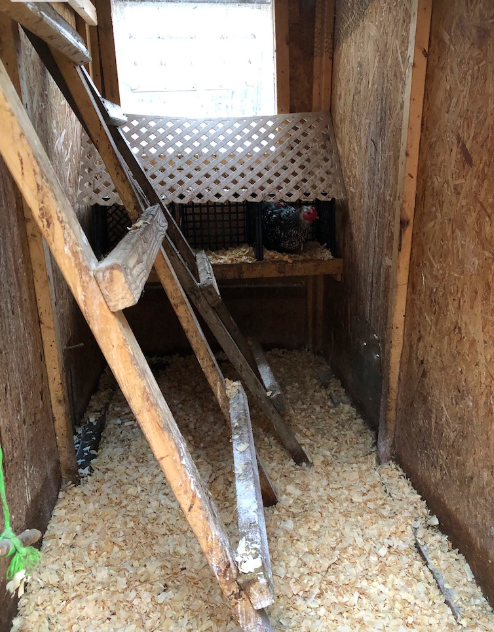
Next, we added nesting boxes. The hens quickly found them and started to lay eggs there. We used simple milk crates with a firm, thin piece of pressed board on the bottom of each nest box.
These are easily removed, which is a good thing because some of the birds seem to use these boxes as a toilet. One quick tip-out and I can add fresh straw or flakes, and it’s good to go.
From reading the advice of others, I learned that nest boxes needed some kind of cover to prevent birds from roosting on top and pooping on hens trying to lay their eggs, especially since these were milk crates with openings in the top.
So, we added a leftover piece of plastic lattice that we had.
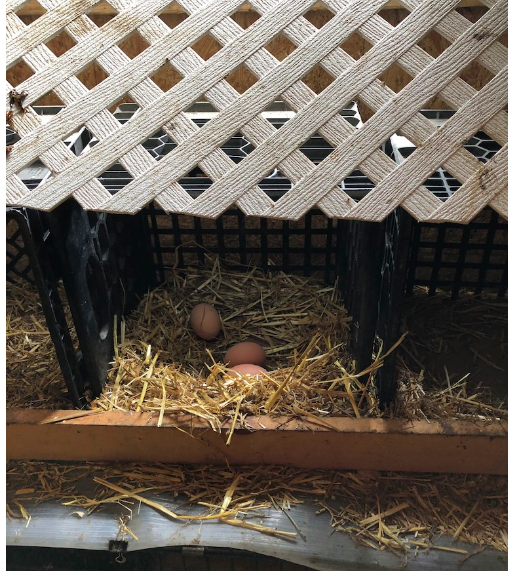
The cover really should be slanted so that the chickens can’t find a way to roost on it. Our works for the most part, but since the lattice lets them get a foot-hold, it really should be replaced with plywood or corrugated material that they can’t latch onto.
Last year, we added two Indian Runner ducks to the flock. Since ducks don’t have the anatomy to roost, they can’t cling to a rail, so I make sure that they have a place to sleep that is not under the roosts.
We’ve had several sets of ducks (Blue Swedish, Pekin, Black Swedish), and the white ones loved to sleep under the roost and got pooped on all night long (ugh).
Now, there’s a nice, sheltered place for the ducks to sleep under the nesting boxes.
This space, by design, fits our rabbit cage, and that’s where we separated our new chicks while we were introducing them to the coop and the rest of the flock.
That worked great as a transitional location to get them used to the coop while keeping them separate from the other birds.
How to make raising chickens easier
These are VITAL tips for making your chicken-raising life easier and keeping your birds safe
1. Feed and water your chickens outdoors
Whether you have chickens, ducks, or guinea fowl, your coop-cleaning life will be much easier if you feed and water them outdoors.
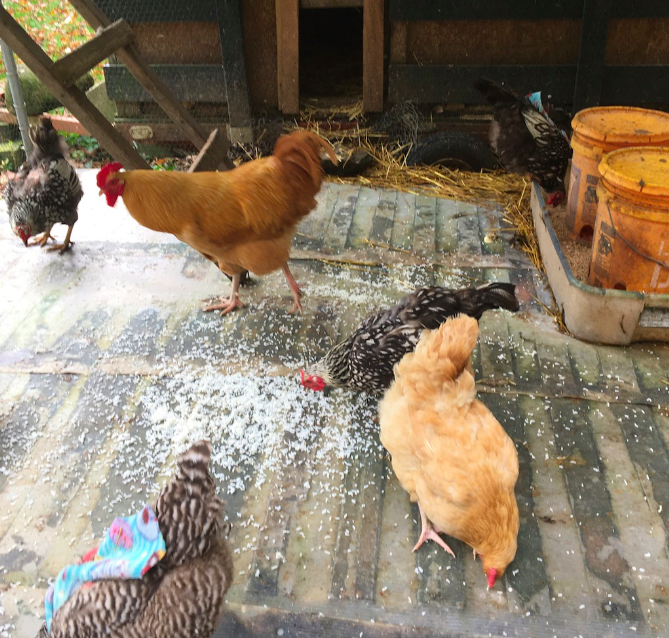
Providing water inside the coop seemed like a good idea—we wanted them to have access to water whenever they were thirsty—but chickens don’t need water at night.
I’m not sure of the party that goes on in a chicken coop at night, but the bedding on the floor of the coop was always soaked. It needed to be changed often and froze solid in the winter. The plywood floor never dried out. And that invites mold and fungus.
Chicken food invites vermin. Keeping chicken food out of the coop helps to keep rats and mice out. It won’t eliminate them—they have to eat, too, and are opportunists—they’ll find food anywhere. But it can help to keep them outside the coop.
I never considered watering and feeding my chickens outdoors until I got this advice from a woman who raises chickens in Maine. I apologize to her that I’ve lost the link to her site and advice. If you’re out there and read this, please drop me a line, and I’ll link to you!
Now, my morning routine includes bringing a bucket of clean water and another bucket of food to the chicken yard, which is actually an enclosure attached to the coop.
I use rubber buckets for the chicken water. It is important to rinse them and provide fresh water daily.
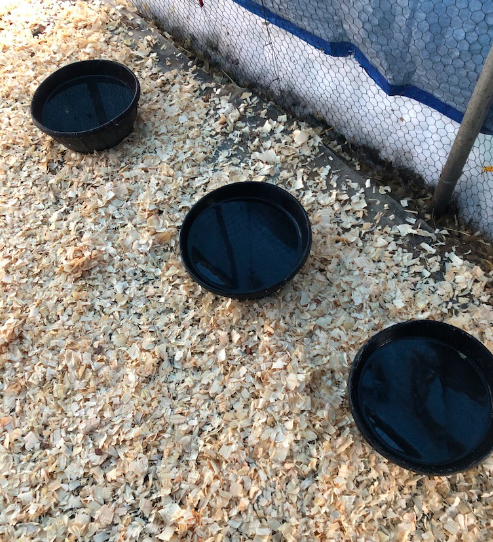
If the water is frozen, I take buckets of warm water to the yard and turn the rubber water buckets ( I use two or three ) outside down. A couple of good stomps will dislodge the ice.
We’ve used the same buckets for years, and they hold up very well to this rough routine. We have never used a heated water bowl, but you certainly can.
While I have some feeders that hold several days’ worth of food, I use them only if we are going away. Food left out invites animals, and some of those consider my chickens to be food. So, I add food to a bin inside the enclosure every day.
2. Use the deep litter method
When we fed and watered the birds in the coop, we always struggled to keep the coop floor clean.
Chickens are indiscriminate poopers, and it goes everywhere. Combined with spilled water, it was a terrible mess and probably an unhealthy environment.
Then, I read about the deep litter method.
In this method, old litter is not removed from the coop but covered with fresh litter, whether you prefer sawdust, straw, pine wood shavings, or cedar chips. Cedar chips are great because cedar oil repels ticks and other bugs, but it’s quite pricey.
The litter stays dry and fluggy enough that I can kick it with my barnyard boots and redistribute it each morning (even though there’s chicken poop in there).
BONUS: The coop only needs the complete removal of all litter 2-3 times a year, and it’s quite light and very easily shoveled out.
Down goes a few handfuls of agriculture-grade lime onto the “clean” plywood floor and a fresh layer of litter. We’re using pine flakes right now, but cedar chips, straw, and sand also work. Some people use leaves.
ANOTHER BONUS: Deep litter provides ample material for the compost pile. I use aged litter compost for my raised beds. But if I clean out the coops in winter, I spread the used litter directly on my raised beds—if I can find them under the snow!
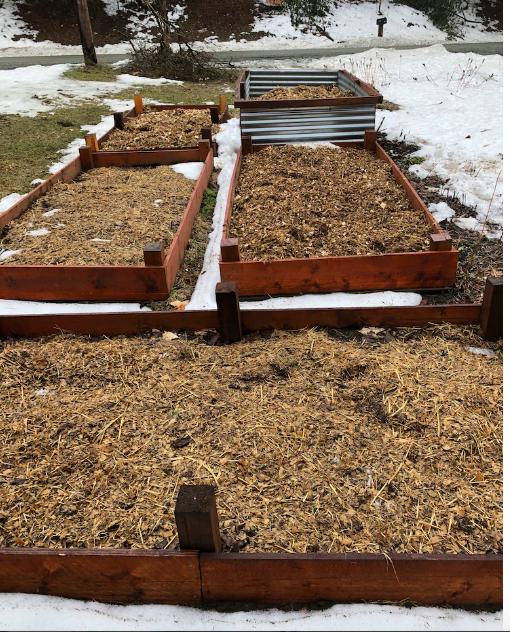
During the summer, I make sure to open the coop window for fresh air flow.
3. Make predator-proofing your coop a priority
Probably our biggest mistake raising chickens hit us in the face when a raccoon found its way into the eave vents.
When we built the first coop, we left the eaves open for ventilation. Since we went years without a problem, we thought there was no problem.
Predator-proofing your coop
How do you predator-proof a coop? The best way is to think like a chicken predator.
Some predators, like weasels, enter through small openings. Others need a larger opening. Scrutinize your coop for openings of all sizes, any way that a predator can breach your chicken sanctuary.
Cover those openings with tough, small-meshed wire, not chicken wire. That’s designed to corral chickens. Connections must be firm and well-closed. Try to work wire under the dirt or add rocks or buried blocks or wire to keep the digging predators out.
Raccoons are amazingly agile and can open covers and doors. Bears are very strong animals. When motivated by food, they can cause a lot of damage, including tearing a coop apart.

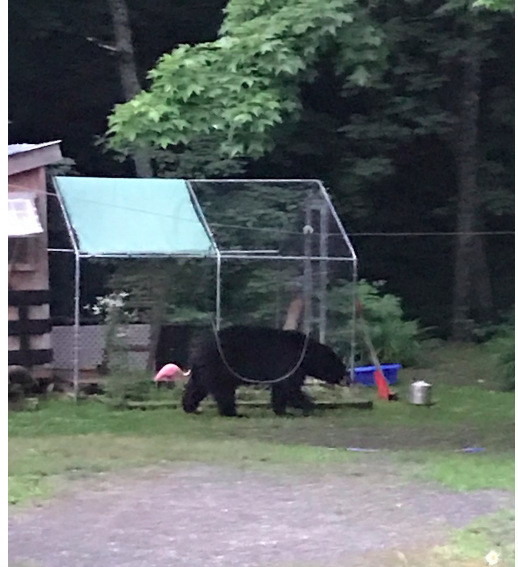
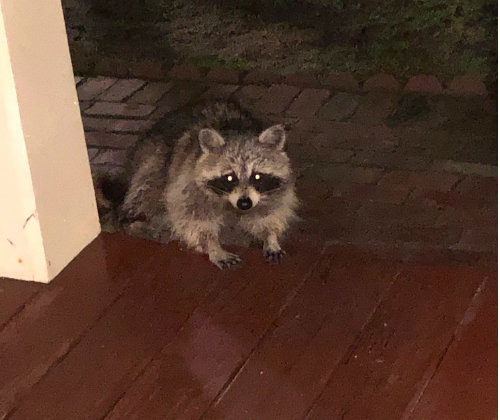
Secure all doors and windows at night. Every night.
Predator-proofing a chicken yard
Chicken yards have additional points of entry—from above and below. These make securing a chicken yard a little tricky and less successful.
Predators in the air include hawks, owls, and other large birds of prey. Even though they’re birds, too, chickens are easy, tasty food.
Having a wire covering over your chicken run goes a long way in discouraging these predators. It is a must if your backyard flock spends time contained in a chicken run or chicken yard.
A permanent chicken yard or chicken run should also have protection around the outside where the walls meet the ground. This prevents tunneling predators from entering the area.
Some chicken owners dig a trench and put a perimeter of cinder blocks into the trench. Others extend the wire mesh covering the walls onto the ground or may turn it up and bury it. You can also bury cement blocks into the ground and use that as a foundation.
It’s not possible to prevent 100% of tunneling predators. They are crafty and motivated by the thought of easy food, even if it’s just leftover chicken food.
Other ways you can make raising a flock of backyard chickens easier:
1. Buy a chicken coop door that opens and closes automatically. Here’s a great automatic chicken door. We bought one a few months ago, and I LOVE it. But I still go out every night to make sure that it really did close and to close the door on the outer enclosure. When it comes to predators, you can never be too careful (or paranoid).
2. Use an automatic waterer in summer
3. Keep food and shavings near the coop in covered pails
4. Surround the chickens, not the garden (Wow. This took me a long time to figure out).
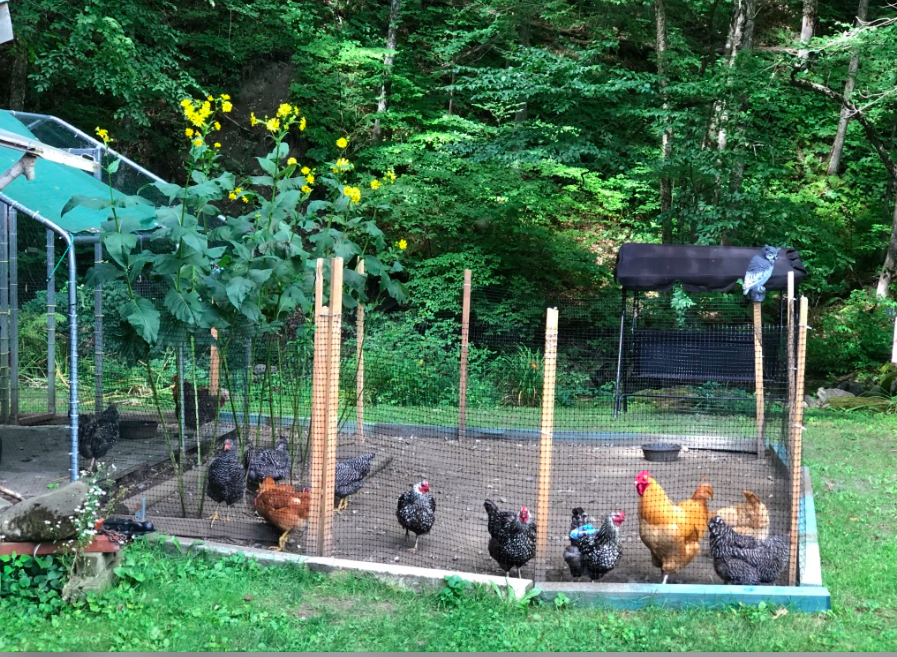
5. Build a chicken tractor or run that you can move around, keeping them corralled while letting them free-range (more or less). You can build a lightweight chicken tractor using PVC.
REMEMBER: It’s very important to put a cover over the birds. When chickens are outside corralled in a pen that they can’t escape from, they are sitting ducks (pun intended) for hawks and owls.
Another reason to cover your chickens (at least some of the time) that are outside? Avian flu.
Avian flu is spread by wild birds to home flocks. Taking “biosecurity” measures to separate your chickens from any wildlife by fencing them in, covering some of the chicken yard, and reducing reasons for waterfowl to come near your birds (such as spilled chicken feed and ponding of water), will help.
I plan to write a whole post on keeping yourself and your chickens safe from infections, so stay tuned.
These tips have literally changed my chicken-raising game and kept my girls (and boy) safer. The feeding and watering routine is easy, and tucking them in at night is as simple as closing the chicken door after they’ve all gone in for the night.
Try implementing some of these tips, and you’ll be rewarded with a healthy flock, a steady supply of eggs, and good litter for your compost bin or compost pile.
We haven’t lost a chicken to disease or predator in years, so we must be doing something right.
Wondering if you have an egg-bound chicken or if your chicken just wants to nest? This post might help you decide and figure out what to do.
Leave a comment and let me know your best tips. I’ll take your advice and leave the tips for our readers. Thanks!


